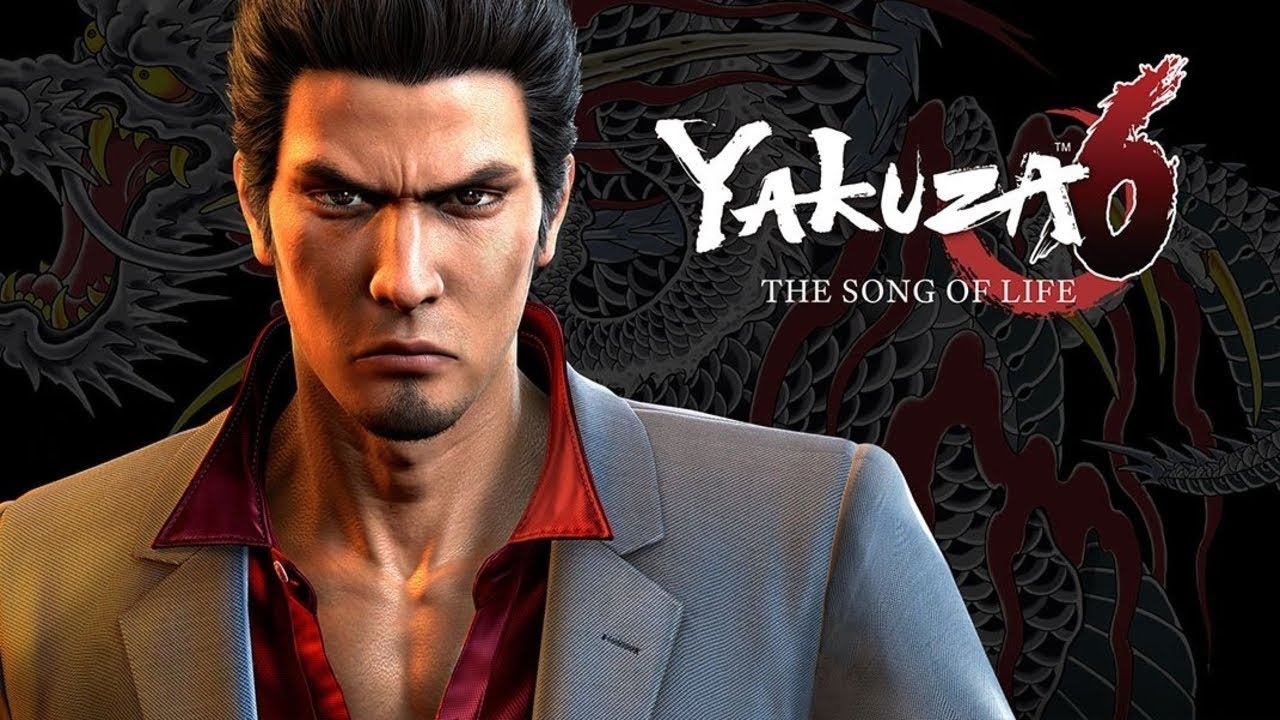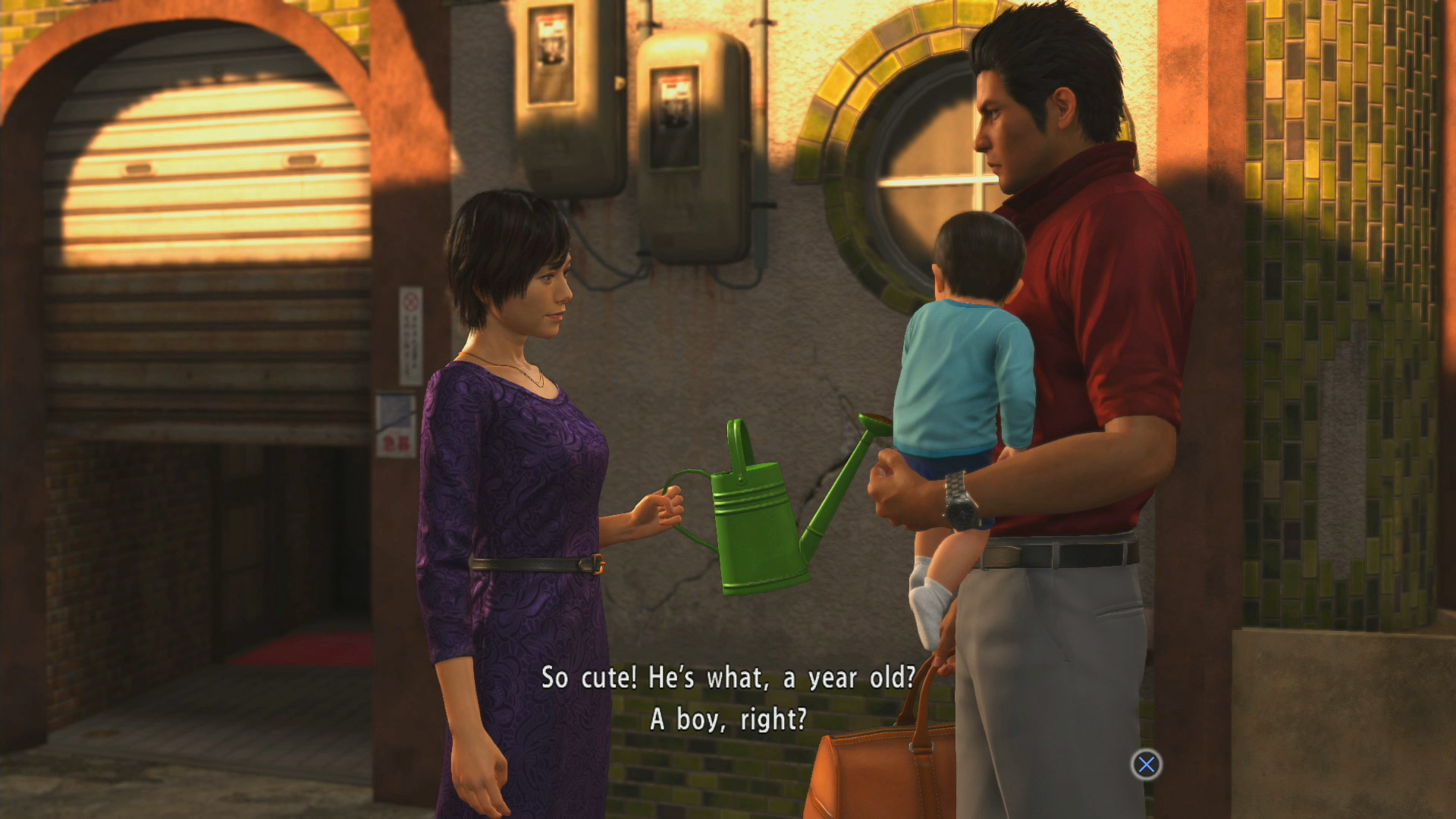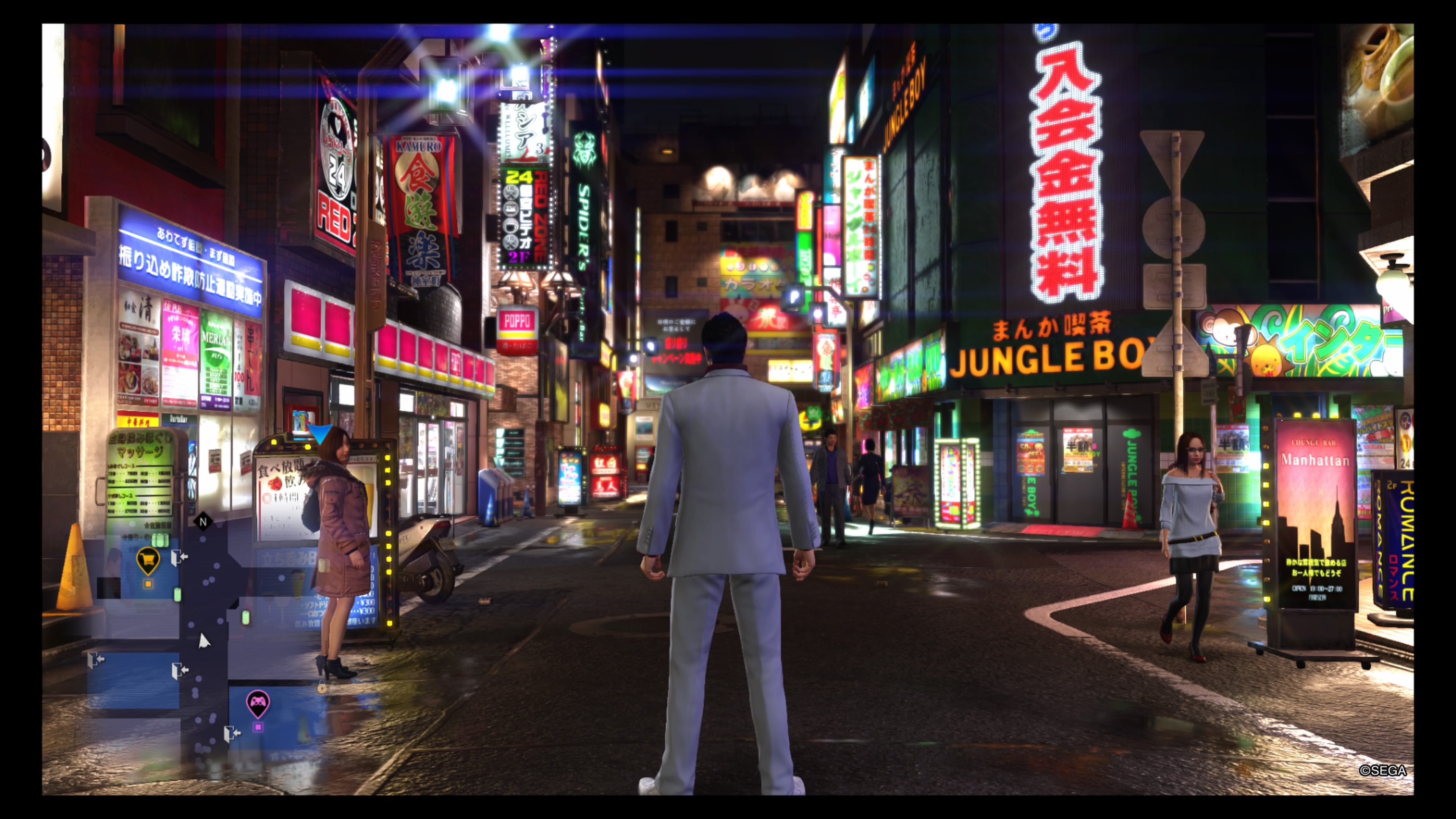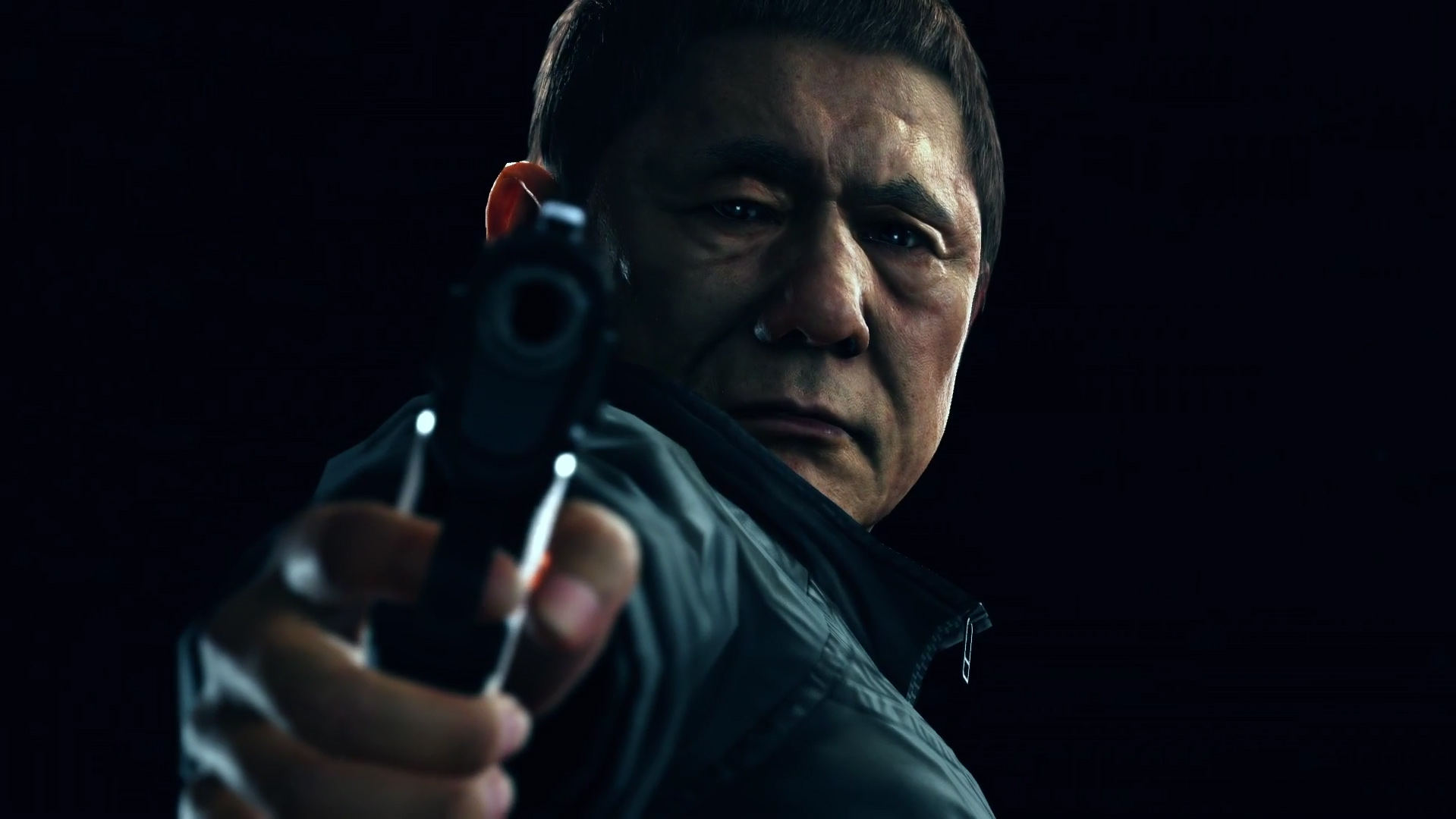
With its boost in popularity from the release of Yakuza 0, the Yakuza franchise has quickly become a series that went from flying under most peoples radar to a relatively well known name. Following the story of Kazuma Kiryu, the Dragon of Dojima, players experience the events in his life relating to the life of crime he seemingly cannot leave behind him. Recovered from his injuries, the series long running protagonist Kazuma Kiryu is approached by the police and is arrested for his crimes.
He willingly goes to prison for three years, leaving the orphanage and the children he cares for behind, as well as his long time ward Haruka. Upon his release, Kiryu returns the orphanage to find that Haruka has run away. Vowing to see her return, he sets out for the city of Kamurocho. He finds that Haruka had a child and was in a hit and run accident, putting her into a coma. Now with the baby known as Haruto, he sets out to uncover the unknown father of the child, and who is responsible for Haruka’s injuries. How does the final chapter for the legendary Yakuza boss stack up?
Yakuza 6: The Song of Life
Publisher: Sega
Developer: Yakuza Studio
Platform: PlayStation 4 (Reviewed)
Release Date: April 17, 2018
Players: 1 Player
Price: $59.99

The story itself is overall good, with its twists and turns it’s easy to become quite involved with the progression. As the plot unfolds and more is added, it plays out like previous other games where even a small plot point becomes something bigger and darker.
This time, the story focuses more on family and parental connections, and quite a lot of things hit closer to home than previous entries — especially for long-running fans. Overall, it creates a very enjoyable experience.
However, it’s not without its faults. Throughout the game as things unfold, about half of the stories begins to drift off and preliminary motivations are lost for about a third of the game.
While the game itself is still enjoyable, overall it weakens the plot until things start to tie together towards the end of the story. Thankfully, however, the game still retains a bit of the humor based sub-stories that older fans are used to from previous entries.
Likewise, some of the staple characters of previous Yakuza games are absent from the plot. This includes only small appearances from fan favorite Goro Majima. While this allows the plot to focus more on Kiryu and his actions, it leaves the feeling of something being lost that longtime fans such as myself love. Still, right up to its bittersweet ending the game is overall a good entry story-wise within the series, however, it doesn’t feel like the strongest.

In moving away from the game engine that previous entries used, Yakuza 6 is beautiful.
Characters now have far more detail than before. The environments pop out as close to being as lifelike as possible. One of the most impressive sights to myself is the use of lighting in Kamurocho at night. The neon lights shining and illuminating the streets as you travel across town really shows how much care they wanted to have, creating a new visual evolution for the series.
Still, even with this it’s disappointing that it runs at 30 frames per second, even on a PlayStation 4 Pro. This is mostly noticeable in the action segments within the game. While the game engine can now support more enemies and allies on the screen and it runs fine, quick movements are noticeably less smooth. Overall, it feels as if they took two steps forward and one step back due to this.
As with the previous entries, Yakuza 6 features a variety of gameplay elements. While exploring the different locations of the game, you are treated to both the storyline based missions, the optional cell phone-based event message system called “Trouble,” or even substories that can be initiated by talking to someone or even walking around.
Most of these events and elements almost always end in combat.
The combat itself is fun but is more streamlined or watered down depending on how you look at it compared to previous entries. While it’s not as fast paced, for the most part it requires a bit more strategy than before. There is now only a single fighting style in the game, which is a pretty big disappointment for returning fans of the series.
However, upon completion of any quest, event, or combat phase – you do get experience to upgrade your abilities. This is split in between five different types: strength, agility, spirit, technique and charm. Each upgrade requires a different amount of combinations of points to be spent to increase Kiryu’s strength.
It is, however, easy to use these to your advantage. When focusing on just increasing my health, strength, and defense, I was able to clear the game easily with only one death – all while not watching my health bar. Alongside this, there are quite a few mini-games and activities that can be done in the game.
Returning favorites include batting cages, darts, arcade games, karaoke, dating, and mahjong. New to this is collecting cats for a cat cafe, personal training, clan fights, spear fishing, and cam girl internet chat. I find it great that the developers brought Virtua Fighter 5: Final Showdown as well as PuyoPuyo fully into the game.

My least favorite activity was Clan Battles. During your playthrough you’ll get to an event involving a gang-combating group known as JUSTIS, however they became corrupted and you are asked to lead a new group to take them down.
This plays out as a resource management based real-time strategy game. While fun at the start, with the right combination of characters on your team the game became all to easy for me as I ended up just being able to spam characters on the field by using named characters abilities, and almost never ran out of resources.
The soundtrack to the game is very enjoyable. Often the Yakuza soundtracks have had the need to grow on you to be fully enjoyed, and this is no exception. While they sometimes have a few standout tracks that appeal on first listen, they have not strayed away from what makes the music enjoyable. Each track fits a specific mood depending on what happens in the game and I really never got tired of them.
The voice acting in the game is great as well. Its always has been a pleasure that they have been keeping the Japanese voice track in the game which helps elevate the game and its atmosphere. Takaya Kuroda does a fantastic job with his reprisal of the role of Kiryu, as the game would not be the same without him. A fantastic addition to the game is famed actor Takeshi Kitano, also known as Beat Takeshi. The combination of these two voice actors stole the show in the game and are the most memorable in the series.

A common question that people interested in the series will ask long time fans is: ‘Is this a good one for me to start on?’. My answer would be maybe, with a strong leaning towards no. This game attempts to fill in new players with what happened in previous installments, which helps to create an overall picture of things that have occurred.
Yakuza 6 is first and foremost the end of Kiryu’s story. There are a lot of events from previous games that have been referenced, as well as a few sub stories that can leave people scratching their heads. Likewise as a hole, the main story itself is far more impacting for people who have played previous installments when understand the long running relationship with the characters.
Is the closing of Kiryu’s chapter in Yakuza 6 fulfilling? Honestly I would say no. I expected a bit more from it going in, but does it make sense? Absolutely. Also, with the introduction of the new protagonist Ichiban Kasuga, its hard to imagine how he will be able to fill a such a big role as Kiryu has before.
On a personal note relating to this title: This is the departure of one of my favorite protagonists throughout gaming. My experience with the story of Kazuma Kiryu has been nothing more than a heartfelt one. It’s funny that a tough as nails protagonist has grown on me as much as he has. Through his hardships, trials, and cheerful moments, I have enjoyed everything from start to finish.
Yakuza 6: The Song of Life was reviewed on the PlayStation 4 using a review copy purchased by Niche Gamer. You can find additional information about Niche Gamer’s review/ethics policy here.
The Verdict: 8
The Good:
- Heartfelt story element that tug at the strings of older fans.
- The visual upgrades are done very well on the new engine.
- Enjoyable gameplay experience with a lot of added elements and side activities to do.
- The voice acting and atmosphere really helps to set the tone of the game.
The Bad:
- The story is not as strong and frame rate is lower than previous releases.
- Compared to previous games, aspects of 6 is watered down such as combat.
- Some story elements will alienate new players to the series.
- The Departure of the long running protagonist Kazuma Kiryu.

